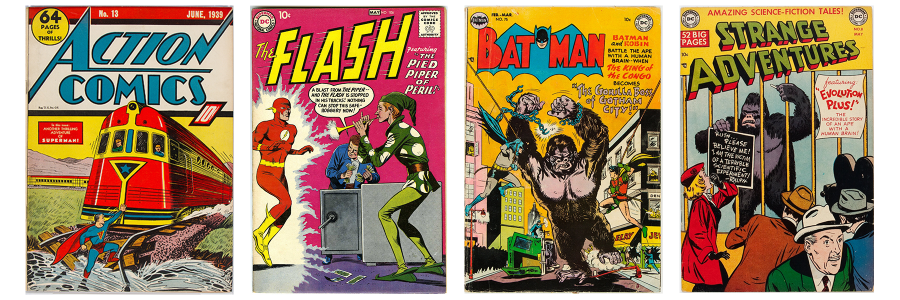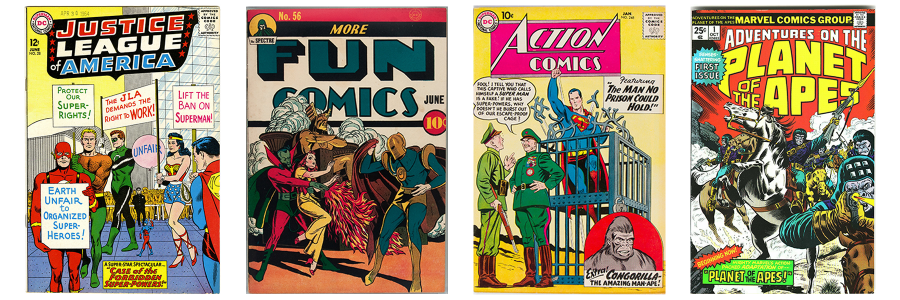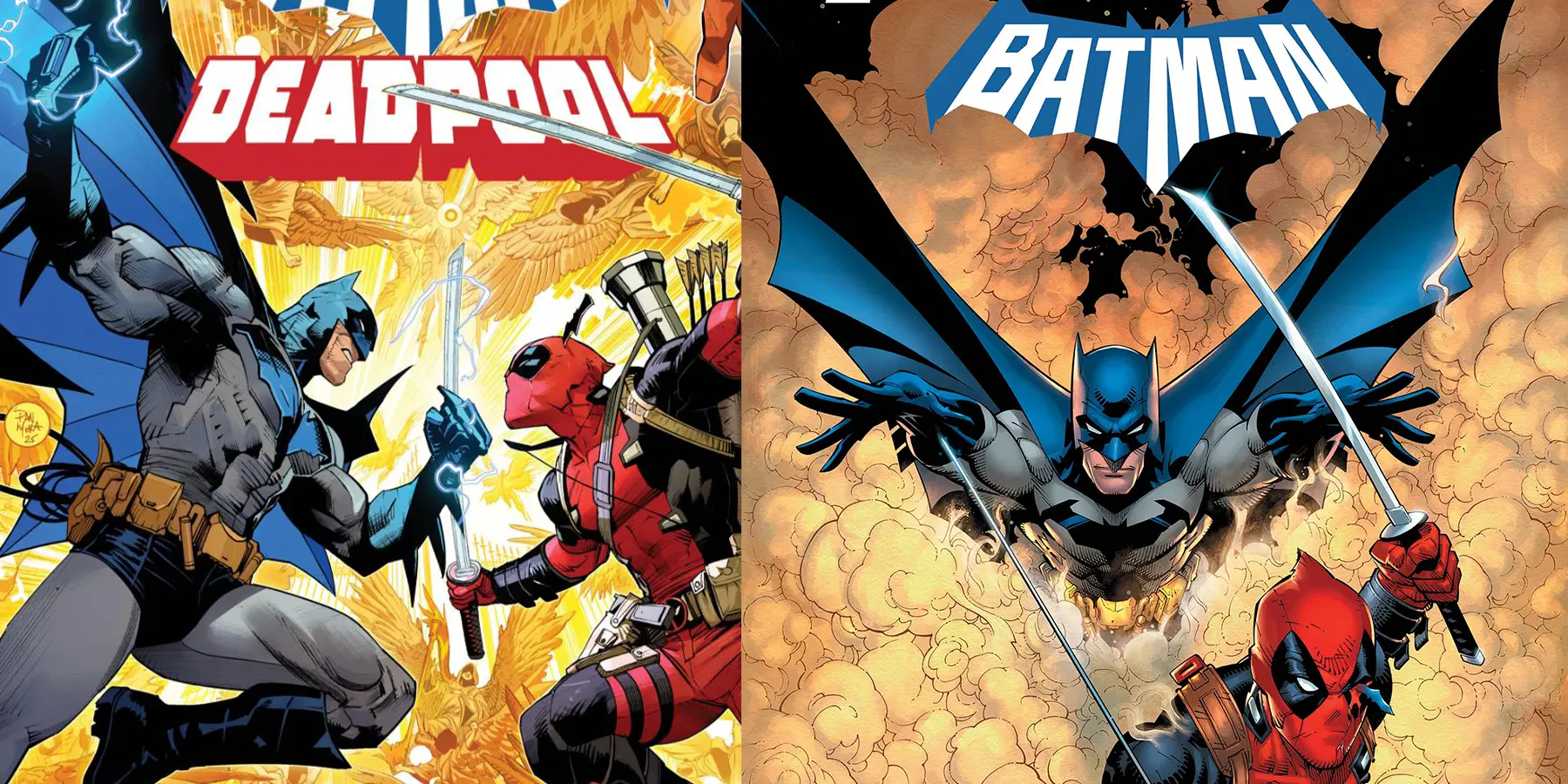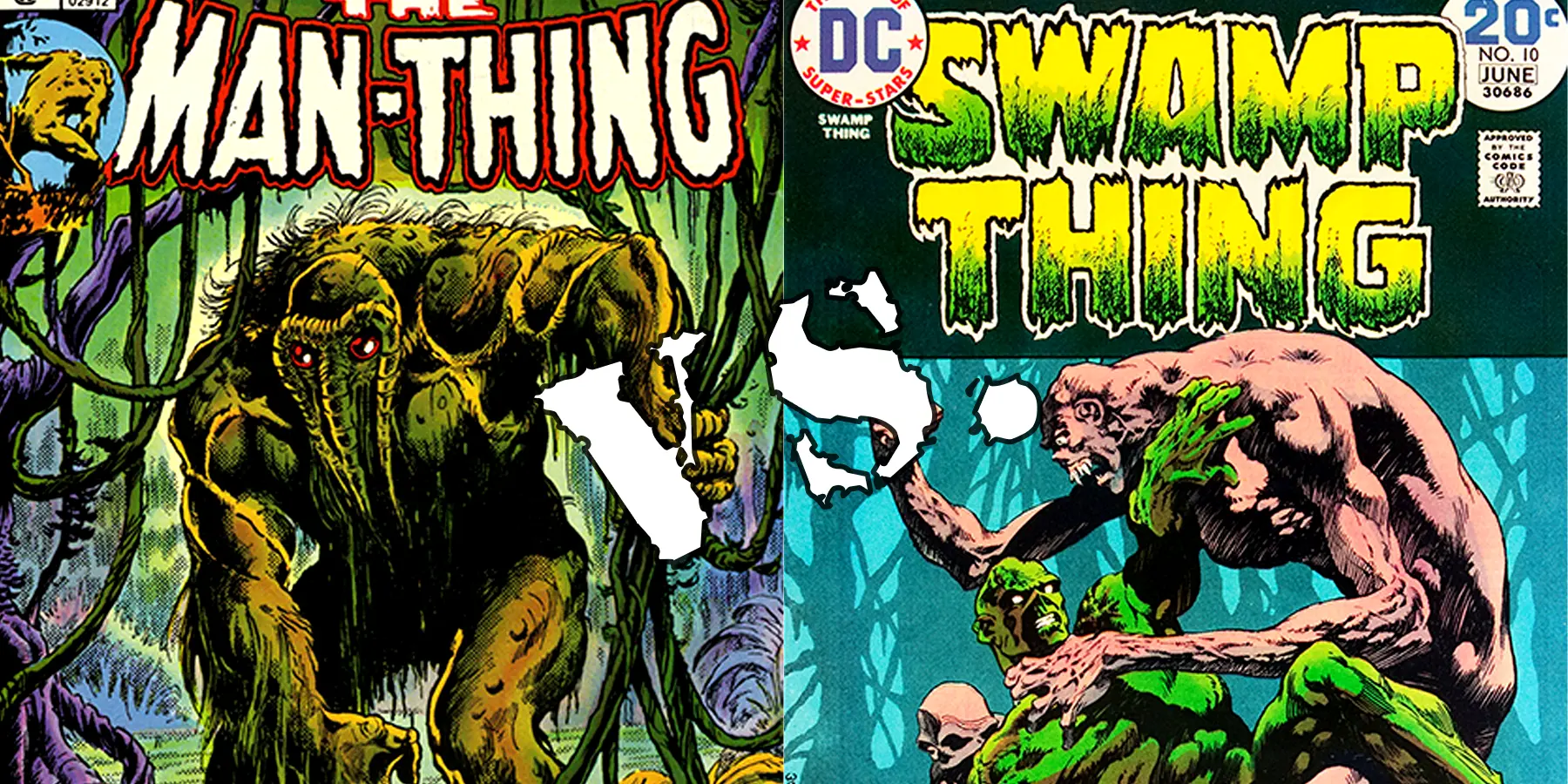The presence of apes and gorillas in comic books reflects both humanity’s fascination with the animal kingdom and a symbolic exploration of primal power, mystery, and our evolutionary roots. Since the early days of comic strips and the Golden Age of Comics, apes and gorillas have held a unique place in comics, taking on roles that range from fierce antagonists to misunderstood heroes. Let’s explore why these larger-than-life creatures became so central in comics, the cultural themes they reflect, and some iconic characters and issues that defined this trend.
Early Appearances and Symbolism of Apes in Comics
The use of apes and gorillas in comics traces back to the popularity of adventure tales and pulp magazines, where jungles and exotic lands were often portrayed as places of danger and mystery. Apes, as the “wild counterpart” to humans, symbolized both brute strength and untamed power.
Why Apes and Gorillas Were Used as Central Characters
- Primal Fear and Power: Their close resemblance to humans, combined with immense strength, made apes a symbol of both fear and fascination.
- Exoticism and Colonial Imagery: Western fascination with “exotic” lands, particularly Africa, placed apes in adventure and jungle stories, where they often symbolized the wild unknown.
- Evolutionary Themes: Apes represented humanity’s evolutionary origins, embodying both our primal instincts and the possibility of regression to a more savage state.
- Cultural Reflection: During times of social or scientific upheaval, apes symbolized broader fears—whether of societal collapse, the dangers of unchecked power, or the unknown “other.”
The Silver Age Boom: When Apes Ruled the Comic Book Covers
During the Silver Age of Comics (1956–1970), DC Comics capitalized on the visual appeal of gorillas, which reportedly boosted sales when they appeared on covers. Apes became a common feature, particularly in science fiction and superhero comics, symbolizing everything from primal antagonists to complex villains.
Key Contributors
- Carmine Infantino: This legendary artist was pivotal in popularizing apes in DC Comics, creating dynamic covers and stories featuring gorillas and making them some of the most visually compelling villains.
- Julie Schwartz: As an editor at DC Comics, Schwartz noticed the popularity of ape-themed covers and actively promoted them in the industry, especially within superhero and science fiction titles.

Notable Comics Featuring Apes and Gorillas
From the Golden Age to the Modern Age, apes and gorillas have starred in numerous iconic comic issues. Here’s a look at some standout examples:
Golden Age of Comics (1938–1956)
- Action Comics #13 (1939)
- Villain: A rampaging circus gorilla.
- Artist: Joe Shuster.
- Significance: Among the first gorilla villains in comics, setting the stage for apes as formidable adversaries.
Silver Age of Comics (1956–1970)
- The Flash #106 (1959) – First Appearance of Gorilla Grodd
- Publisher: DC Comics
- Artists: Carmine Infantino (pencils), Joe Giella (inks)
- Significance: Introduced one of DC’s most iconic villains, Gorilla Grodd, a hyper-intelligent, telepathic gorilla from Gorilla City and a recurring foe of The Flash.
- Batman #75 (1953) – Batman Battles the Super-Gorilla
- Publisher: DC Comics
- Artist: Lew Sayre Schwartz
- Significance: Batman faces off against a scientifically enhanced gorilla, reinforcing the theme of apes as powerful, intelligent foes.
- Strange Adventures #8 (1951) – The Gorilla Who Challenged the World!
- Publisher: DC Comics
- Significance: A story featuring a powerful gorilla, helping to establish the trend of ape-centric science fiction stories.
- Justice League of America #28 (1964) – Attack of the Star-Gorilla!
- Publisher: DC Comics
- Artist: Mike Sekowsky
- Significance: Features a gigantic space gorilla, showcasing apes as extraterrestrial or evolved threats.
Modern Age of Comics (1980-Present)
- Congo Bill/Congorilla
- First Appearance: Congo Bill in More Fun Comics #56 (1940); transformation to Congorilla in Action Comics #248 (1958).
- Significance: Congo Bill gains the ability to transfer his consciousness into a golden gorilla, a character who later joins the Justice League, showcasing apes as heroic figures.
- We3 (2004)
- Publisher: Vertigo/DC Comics
- Artist: Frank Quitely
- Significance: This story follows cybernetically enhanced animals, including a gorilla, reflecting modern themes of ethics, technology, and animal rights.
- Planet of the Apes (Marvel Comics, 1974)
- Artists: Mike Ploog, others
- Significance: Based on the film, Marvel’s comic series explored a dystopian world ruled by intelligent apes, echoing Cold War anxieties about societal collapse.

Societal and Cultural Relevance of Apes in Comics
From the 1950s onward, apes in comics have mirrored societal fears and fascinations:
- Cold War Fears: In the post-WWII era, characters like Gorilla Grodd or Titano the Super-Ape played into fears of scientific progress gone wrong and nature overpowering humanity’s control.
- Civil Rights and Social Change: Some interpretations suggest ape villains symbolized “the other,” reflecting racial tensions and cultural anxieties during the civil rights era.
- Evolutionary Fascination: Apes represented humanity’s connection to the natural world and evolutionary past, especially in science fiction stories that dealt with time travel, devolution, and the blurred lines between humanity and the animal kingdom.
Why Were Apes and Gorillas So Popular in Comics?
- Visual Appeal: Gorillas’ powerful forms made for dynamic, eye-catching covers, especially with artists like Carmine Infantino and Jack Kirby.
- Primal Symbolism: Apes embodied primal power, adding depth to superhero and villain roles in comics, contrasting the more “civilized” human heroes.
- Reader Curiosity: During the 1950s and 60s, apes were an exotic subject, appealing to readers who were fascinated by adventure, horror, and sci-fi genres.
Conclusion: The Enduring Appeal of Apes in Comic Books
From the Golden Age to the present, apes and gorillas in comics have symbolized everything from raw power to complex social themes. Characters like Gorilla Grodd, Titano, and Congorilla continue to captivate audiences, embodying humanity’s relationship with the animal world and the mysteries of our evolutionary past. Artists like Carmine Infantino, Frank Quitely, and others have contributed to the rich legacy of apes in comics, ensuring these fascinating characters remain a vital part of comic book lore.




